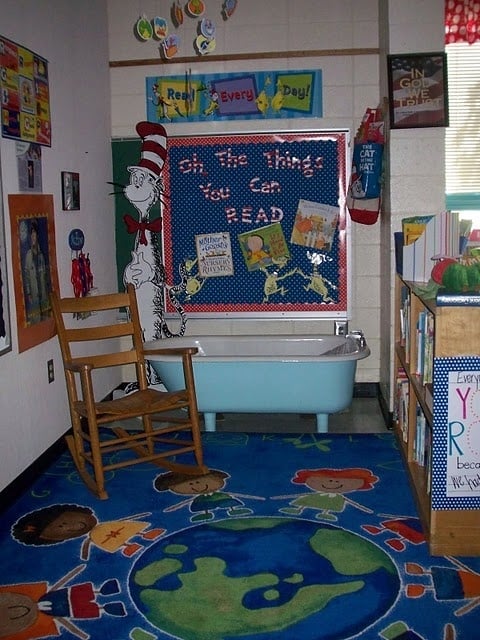It’s the start of a new school year and that means you have a blank slate in terms of setting up your classroom. This is a great opportunity to reflect on what worked well and what you want to change. Well-run classrooms begin with the room’s physical layout. Keep these teacher-tested tips in mind as youwork on this year’s classroom design.
1. Seating. Whether you have desks or tables, you’ll want to think through where to put the students for seatwork. Different instruction styles require different seating arrangements. Small groups of desks make it easier for collaboration, while placing desks in a U-shape allow everyone to have a front-row seat. No matter how you arrange the desks, don’t be tied to the arrangement. If something isn’t working, change it. As you get to know your students, you will be able to judge the best placement for maximum learning and minimal distractions.
2. Distinct areas. It may be helpful to create different areas within the classroom. For example, a classroom might feature learning centers, small and large group areas, music areas, multimedia spaces and of course, your teacher space. You can make these unique spaces serve special purposes. Teachers have placed comfy rocking chairs, giant rubber tires and even old bathtubs in a quiet corner to serve as a special reading and music area. The sky’s the limit when it comes to designing these areas! Be sure to ask for material or hand-me-downs from friends and family to help improve the design and function of your room. Repurpose. Repurpose. Repurpose!

Reading bathtub courtesy of Mrs. Farmers 2nd Grade Classroom
3. Storage. There never seems to be enough storage in any classroom, so it becomes crucial to maximize the storage you have. Add a tablecloth or skirt to a table (where students don’t sit) which allows you to store tubs and boxes underneath and out of site. Place shoe storage boxes on top of tables to create additional supply storage. Consider seats that do double duty. Make bench seats with storage underneath or use plywood and plastic crates to create indivdiual seats with storage. An important step in arranging your storage is to visualize HOW movement in these areas will flow. Imagine how a child will go through each step of the day and arrange your storage to fit these needs. Be sure to make frequently used supplies easily accessible to help eliminate delays, disruptions and confusion.

Crate seats canserve both as seating and storage in your classroom via Educational creativity blog.
4. Decor. If you are not already addicted to Pinterest, then try it out! You’ll find hundreds of ideas for making your classroom a warm and friendly home for yourself and the children. Leave some of your spaces undecorated so that your students can make the room reflect their personalities and work. Students will enjoy learning in a space that they feel a part of. Just remember though, that less is more. You may want to cover every inch of walls, but too many words and images can be distracting or overwhelming to students. Décor should reinforce learning, not just be a distraction. Follow Learners Edge on Pinterest for some great classroom décor ideas!
5. Movement. Research now proves that many children need extensive mobility while learning. Provide opportunities for children to move around throughout your classroom rather by visiting the different distinct areas, or providing exercise balls for students to sit. Remember, an active body supports an active mind. For more ideas on incorporating movement into your classroom, enroll in Learners Edge Course 5853: A Moving Body, A Thinking Brain.
As a teacher, your classroom often becomes your second home. Use these tips andmorein designing your classroom to make it an inviting, comfortable place to be and you will enjoy teaching as much as your students will enjoy learning and exploring in your classroom. Click here for more ideas on how to create your “ideal classroom.”
***
Sources:
*Tips adapted from:
- Rand, M. (n.d.). Getting Ready for the Start of School, Part I: 8 Things to Consider in Setting Up Your Classroom. Retrieved August 28, 2016, from www.thepositiveclassroom.org
- Factory, F. (2014, August 7). 5 Things to Consider When Setting Up Your Classroom. Retrieved August 29, 2016, from http://blog.fieldtripfactory.com/2014/08/07/setting-up-your-classroom/
- Shalaway, L. (n.d.). An Easy Guide to Setting Up Your Grade K-5 Classroom. Retrieved August 30, 2016, from http://www.scholastic.com/teachers/article/easy-guide-setting-your-grade-k-5-classroom
***
Learners Edge is passionately committed to providing you with continuing education coursework, materials, and tools that will help you succeed in your classroom and in your career.
Offering more than 125 online courses for teachers, you can earn the graduate credit you need for salary advancement and meet your professional development needs. Contact us today to get started!






